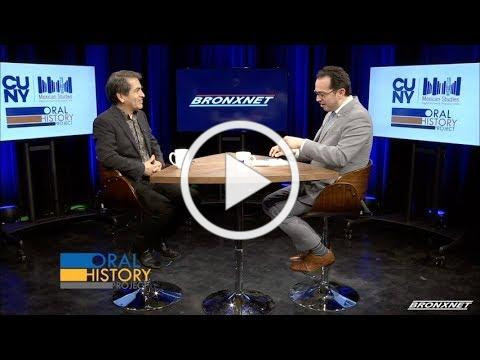The Song of Thousand Winds -Mourning Mr. Democracy of Taiwan
Lee Teng-hui 千の風になって
We mourn the loss of Taiwan‘s former President Lee Teng-hui. Saluted as Mr. Democracy, he laid the foundation for Taiwan ‘s democracy beacon, which will guide Taiwanese ahead with courage for generations. He was a respectable and humane politician, philosopher and apostle. I was on the governmental duty just at the time when Lee was Taiwan's President, and thus was able to observe his exquisite reorganization of the country. Just as President Lee, my father was born during the Japanese colonization of Taiwan. and their adult lives played out in various stages of Taiwan's history. They were thus enriched by the multiple cultural influences of an era of historical change, and naturally were able to selectively absorb the cultures of other countries. It
is in this environment that they sought all kinds of knowledge from predecessors - like a sponge, as Dr. Thomas Lee mentioned in his article about Lee Teng-hui.
Each day fades away wistfully, and broken memory is hard to touch, however this great former president's figure has never been distant. It does not diminish President Lee's legacy that he is a controversial figure in Taiwan - many refugees from mainland China were quite happy with the undemocratic status quo. The significant change he initiated in Taiwan will not be reversed, unless of course the communists invade successfully.
Former President Lee Teng-hui mentioned that he sang a Japanese song " I am a Thousand Winds" at his 86th birthday banquet. Former President Lee said that when he was young, he often wondered what would happen after death. When he was 16 in high school, he wrote an article entitled "Why do people die?" During his high school years, he reached no greater insight than thinking that if people die, they will become part of nature; but recently upon hearing "Song of I am a Thousand Winds" he "deeply realized the nature of death." No other song has described death so profoundly and nature with such optimism."
I would also like to share the article by Dr. Thomas H. C. Lee (李弘祺) who is faithful to its subject. I enjoyed it and found it touching. Apostle. Philosopher. A great figure with both heroes and magnates──in memory of Mr. Lee Teng-hui (使徒.哲人.英豪兼具的大人物──紀念李登輝先生) , Thursday, July 30, 2020 @ Voice Tank, you can read the whole article below or click the link.
https://www.voicettank.org/single-post/2020/07/31/073101?fbclid=IwAR1yXNMb-K6QJGIYa8riMrGSo624We2RBRdhvCPWWhnVR8RRV4qnuFuQlcI
The Song of I am a Thousand Winds 千の風になって
The lyrics were originally American poems
"Do Not Stand at My Grave and Weep" is a poem attributed to be written in 1932 by Mary Elizabeth Frye. Although the origin of the poem was disputed until later in her life, Mary Frye's authorship was purportedly confirmed in 1998 after research by Abigail Van Buren, a newspaper columnist.[1]
• Do not stand at my grave and weep
I am not there. I do not sleep.
I am a thousand winds that blow.
I am the diamond glints on snow.
I am the sunlight on ripened grain.
I am the gentle autumn rain.
When you awaken in the morning's hush
I am the swift uplifting rush
Of quiet birds in circled flight.
I am the soft stars that shine at night.
Do not stand at my grave and cry;
I am not there. I did not die.
The Song of I am a Thousand Winds 千の風になって
A single released by Japanese vocalist Masashi Akikawa on May 24, 2006
千風之歌 (千の風になって)
不要佇立在我墓前哭泣 因爲我並不在哪裏
我並沒有離開人間,我並沒有沉睡不醒
我已化成千風 化成千縷微風 翺翔在無限寬廣天空裏
我已化成千風 化成千縷微風 翺翔在無限寬廣天空裏
秋天 我化成陽光 照射在田野閒
冬天 化作白色雪 綻放鑽石光芒
晨曦升起時, 幻化為飛鳥 輕聲喚醒你
夜幕低垂時,幻化微星辰 溫柔守護你
不要佇立在我墓前哭泣
因爲我並不在哪裏 我並沒有離開人間
化成千風 我已化成千縷微風 翺翔在無限寬廣天空裏
愿-生生不息-- a tenor solo and chorus version video below:
https://youtu.be/jcRBtTtP9f8
https://youtu.be/JRtwNqlV4X4
The article by Dr. Thomas H. C. Lee is faithful to its subject. I enjoyed it and found it touching.
使徒.哲人.英豪兼具的大人物──紀念李登輝先生
Thursday, July 30, 2020
李弘祺
1999年9月21日,台灣發生了空前的大地震,我不免有一種不祥感覺。就好像1976年7月唐山大地震之後不到三個月,毛澤東就過世一樣,很難沒有人不覺得那個地震是不是預表什麽大事要發生一樣?我當然也從内心萌生相似的擔心。
的確,雖然我們都會壓抑心中這樣的聯想,知道它是多麽的不合現代科學,但就連史景遷(Jonathan D. Spence)也忍不住在他的《追尋近代中國》的書中記上了一筆一樣,作爲一個歷史學者的我,在那大地震的消息傳來的時刻,以及其後的幾個月,都時不時會想說,恐怕李先生就要離世升天了嗎?
幸好,李前總統的生命證明了遠比那場大地震更爲堅韌,我們也因此就漸漸淡忘了這個天人感應的想法了。
二十一年後,那不可避免會發生的事情終於來了。
對於李前總統最好的稱呼就是當時流傳了相當一陣子的「民主先生」。説起來非常的意外,現在很少人再提這個名稱了。好像他對台灣最大的貢獻不是今天我們所自傲,而且感到感激不盡的民主與自由一樣。從他退下總統的職位到今天正好經過了二十年,二十年是會使很多人的記憶模糊,而如果李總統的理想不被既得利益分子認同的話,那麽新一代的人當然就更無法去想像究竟李登輝曾做了些什麽有意義的事情。
用一句非常有名的《聖經》的話來説,那就是偉大的人常常在自己的家鄉是不被歡迎的。這就是偉大生命的弔詭。如果今天有許多人對「民主」不再嚮往,那麽如果他們要忘記李先生,最好難道不是說因爲他帶給台灣(以及中國)第一次的民主?
記得蔣經國前總統過世時,我還在香港教書,香港親國民黨的反共人士替他開紀念會,主持紀念活動的先生講述蔣經國對中國民主的貢獻,令人動容。但是他卻一路批評黨外以及各樣的街頭示威運動,完全無法説出台灣民主化過程的社會背景。
他對蔣經國的分析因此就顯得好像是在稱讚蔣經國天縱英明,面對三千多年的中國歷史,突然決定把中國的政治歷史重新改寫,簡直是空前絕後,化解了臺獨反對中國的反叛勢力,替中國開了萬世太平的民主視野。
從歷史宏觀的角度來解釋台灣地方文化的重要性和獨特性,以及中國民主化所應該走的路程的其實是蔣經國先生欽定的接班人李登輝先生。李登輝和蔣經國都有共同對中國歷史文化的看法和擔當,而李登輝更設身處地,比蔣經國更從近代西方及日本的經驗來規劃他的理想和經營。
他們兩人的看法正是許多國民黨和共產黨同路人所完全沒有想像到的:中國文化的偉大時刻就是當他能克服中央與地方的矛盾,能海納百川,積極地讓地方文化參與創造一個五彩繽紛、多元相容的歷史的時候。對我來説,這就是宋代值得我們注意及欣賞的地方。
從陳寅恪先生開始(其實應該從内藤湖南開始),我們看到了一個嶄新的對宋代歷史的看法,推翻過去四百年來從王夫之開始的「陋宋」觀點。這就是因爲宋代有了相當豐富的文化(使得江南地方正式成爲中國文化的重心),也能提供百姓難得的安定生活,並保持與外國的穩定而平等的國際關係。這樣的成就乃是因爲宋朝政府放棄經營領土的野心,也不以威武的國力和政府的集權作爲立國的精神。
宋代三百年間,除了偶爾的「地方叛亂」之外,各地的州縣政府相當能維持合理公平的運作。我相信從陳寅恪以降,中外各地的學者對宋代文化的解釋都是出自這樣的認可。這樣的認可正是現代國家觀念的基礎,也是李先生的政治價值。
李登輝以一個國民黨的主席能看出中國歷史如果要從那個狹隘的「一統以馭天下」的民族主義中解放出來,來建造一個近悅遠來、不分貴庶,表裡如一的政府,以塑造一個合乎近代理性價值的中國文化,這是非常不容易的。他更體認到國民黨必須從脚踏實地,豐裕台灣的社會經濟、提升公民的民主素質做起。
他敢於提出七塊論的説法,把西方學者所提出的,把中國航空公司拆解成幾個可以互相競爭的地方或私人經營的公司的建議提高到一個非常有前瞻性的看法,使得台灣存在的現實意義彰顯出來。這個境界顯然比什麽「仁民愛物」,視百姓為子女,自認自己是一個台灣人的想法更具體地顯現出現代性及全球性的謀略和見解。
李登輝的政治經濟哲學的底蘊,極深思而恢宏細膩,這是發自他對台灣文化愛的精彩表現。很多人誤以爲他跳不出日本教育的桎梏,反映的是,局限於日本人醜化中國人的輕蔑心態。其實這是來自那些批評他的人對台灣文化的無知和瞧不起,真是非常可惜。日本自從明治維新以來,受到西方正反兩面的衝擊,產生了八方風雨來襲,不知何以自處的困窘,以致產生像Ruth Benedict 所説的不就是鞠躬而莫名謙虛,不就是以帝國而瘋狂自命,近一個世紀無法自知。
但是受到日本殖民的台灣,雖然在經濟上無法與日本相比,但是卻在400年來面對了東西各國的交往,產生了不卑不亢、保持自我、與各地保持等距的關係。所以在1920年代,台灣的文化已經能反映出對各國文化選擇性地吸收,而平靜地格義。從比中國更早出現對尼采的介紹,到精美的彩色套印的解剖學教科書,到接待梁啓超、歡迎五四運動,到推動議會請願,不一而足。
李登輝就是在這樣的環境裡,像海綿一樣地吸收各種前人沒有留下、甚至於沒有想過的知識。從此他賡續了台灣人那種海闊天空的使命,要帶給東亞各國全體應該共同享有的平等而互助的理想。
紀念先輩的過世,我們常常用「哲人其萎」的話。李先生是不世出的政治家;他不是純粹的學者或哲學家。但是他是一個不斷讀書,保有讀書人理想的一個學者。很多人批評他喜歡展示他的學問,與專家也要辯論。我個人的經驗並不是如此,我曾經與他長談過一小時。他的成就和地位以及他閲讀之廣博,很自然地威懾了一個只有一般專家知識的大學教授。
如果你沒有像他那樣熟悉日本戰國時代的歷史,沒有讀過卡萊爾(Thomas Carlyle)的《穿衣服的哲學》(Sartor Resartus),不知道誰是内村鍳三,不瞭解爲什麽黃彰輝在台灣流行存在主義以前30年已經寫了齊克果(S. Kierkegaard)的論文,如果你不知道他對《易經》早有深刻的研讀,那麽你就不應該、也沒有資格對人家説他談到genome 的瞭解有錯誤那種只會顯出自己無知的話了。
1995年他來了他的母校康乃爾大學接受榮譽學位。我和太太兩人開了七個小時的車去參加歡迎的活動。那天他從貴賓休息室走進講場,大家看見他走出來,馬上站立鼓掌喝彩,歡聲雷動,擁了上去。我正好站在第一排。很有趣地,也是沒有意料地,他竟然朝著我走了過來,並伸出手來握我的手……
對李先生的許多回憶,就是寫一本書也寫不完,就此打住。但是如果我不提到最重要的一點,那麽我對他就不算瞭解:他是一個虔誠的基督徒。這是他近憂遠慮、忠於使命、和過人的勇氣的基礎。作爲敬仰他的後輩,我很高興我沒有忘記寫這一點來紀念他。願永恆的造物主帶領他在天上至美至樂的世界安息。
2020年7月30日清晨於美東華濱澤瀑布
作者為紐約市立大學榮休教授





































